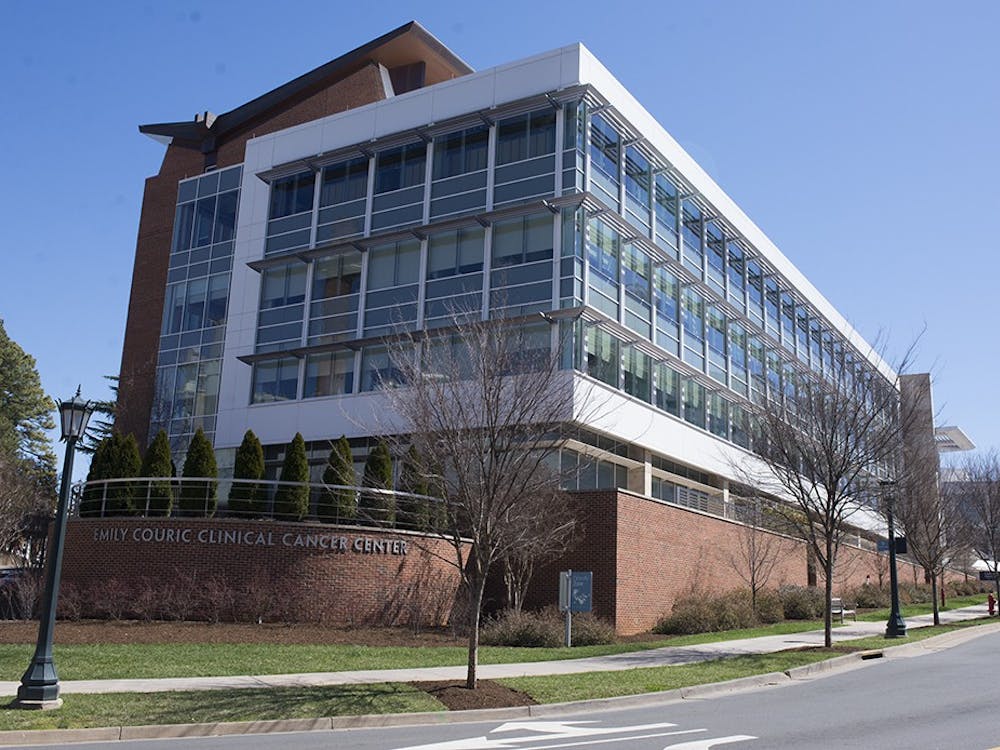It typically takes 12 to 16 weeks of serious training, depending on the individual, to "get fit for the summer," according to Daniel Harper, trainer and fitness consultant at Gold's Gym in Charlottesville. If you're reading this now, you're in luck, because 12 weeks from today is May 14. If you start now, you'll be worry-free by the end of final exams.
Not only does beginning to train early allow for a more effortless ease into summer, it also provides many physiological benefits, according to Harper. Men will lose more body fat and less muscle mass, while women can spot-train particular portions of their bodies.
Harper noted, however, that most people who have their desired physique have most likely been working to improve their bodies for about a year.
"Making it a lifestyle is key," he said.
The American College of Sports Medicine recommends engaging in cardiovascular exercise for 20 to 60 minutes three to five times a week. Perkins said choosing a cardiovascular machine that makes exercising enjoyable is important, but noted that cross training is also necessary because muscles and joints need to be worked through a variety of motions rather than the same consecutive motion.
Harper recommended 25-to-30-minute intense bursts of exercise or about 45 minutes of endurance training for optimal results. He said he especially likes the step mill, which is not only a good form of cardio training, but also helps to define the legs.
Proctor recommended interval training and high-intensity, low-volume training, such as bike sprints with active recovery, elliptical machines, jumping rope and uphill walking or jogging on the treadmill.
Just as exercise and nutrition go "hand-in-hand," cardiovascular exercise and weight training are also counterparts. According to Perkins, strength training is an important component of a comprehensive exercise program. She said for each decade after the age of 25, three to five percent of muscle mass is lost because of lifestyle changes and decreased use of the neuromuscular system.
Through strength training, the percentage of mass lost can be diminished or prevented, Perkins said.
ACSM recommends a minimum of one exercise of eight to 12 repetitions for all major muscles two to three times per week to significantly cut the amount of muscle mass lost.
Proctor said when the body is working to develop muscle, it burns calories faster than during cardiovascular exercise. After weight training, the body recovers slowly, while after cardio training, it recovers very quickly, he said.
Proctor recommended individuals meet with a fitness professional before beginning to weight train to develop a goal-oriented plan.
Perkins said a personal trainer can also offer an extra push that some people may need to get motivated.
"A trainer will create a personalized program based on your current fitness level and your goals," she said. "The trainers provide education, motivation, accountability and progress reports to all clients."
Balanced nutrition and exercise must be combined simultaneously to ensure the best results. While Harper said both factors are important, he said nutrition is "80 percent of the game."
University Director of Fitness Erica Perkins and Todd Proctor, a trainer at Total Performance, an independent gym in Charlottesville, said nutrition and exercise are equally essential.
"Balanced exercise and good nutrition are key," Perkins said. "People can go to extremes with both and that is unhealthy."
According to University Nutritionist Paula Caravati, active young women should consume 2,200 kilocalories a day, while active males should consume 2,800. She noted, however, that these numbers are all theoretical and that true caloric needs are very individual. She recommended the use of www.mypyramid.gov to more accurately calculate individuals' caloric needs.
Part of Caravati's job is to work with the University's dining production staff and to advocate for healthy menu items, such as the options provided at the "healthy bars" in Newcomb and Runk. Entrées served in these areas are designed to have no more than 30 percent of calories from fat and to contain no more than 600 to 700 milligrams of sodium.
University Dining has also made some menu choices healthier by deciding in August to use cooking and frying oils that are free of trans-fat . Dining halls also introduced "No Fry Fridays," which feature baked -- rather than fried -- French fries. Currently, University Dining is working to reduce trans-fat levels in bakery products.
In an effort to get the word out about proper nutritional habits, Caravati visits dorms to teach first-year students about making healthy choices while using a meal plan. University Dining also implements large-scale nutrition education efforts in dining halls. The staff currently has plans for four events at each dining hall during National Nutrition Month. The theme is "Eat Mo' Fruits and Vegetables." Each dining hall will feature its own special menu with a fruit and/or vegetable focus. These events start March 13 at Runk.
Perkins said the University has many departments on Grounds that offer services and information to help students develop a lasting, healthy lifestyle. She noted there are a variety of fitness classes offered at the University about all components of fitness, personal training services and nutrition education.
According to Perkins, fitness has no endpoint.
"People should start exercising and keep exercising for their personal health rather than for physical appearance during a particular season," she said.
A simple shift in mindset can produce permanent results, Perkins said, noting that "it is a lifelong journey, not a temporary fix."






